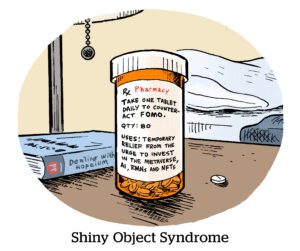The Cannes Lions festival may have turned 70 this year, but it’s not showing its age. If most septuagenarians move a bit slower than they did in their youth, Cannes Lions moved faster than ever to match the speed of the convergence of convergences happening in the industry.
At the event, one industry watcher suggested the pace of change we are experiencing today is the slowest we will experience in the rest of our lifetimes. That, frankly, is a little bit exhilarating.
Here are five themes that stood out from the event:
1. Ditch the AI doom and gloom
There was an annoyingly persistent debate at Cannes around whether generative AI is a force for good or evil. This binary thinking lacks any connectivity to reality. Machine learning has been a part of the advertising industry for nearly two decades. The word “generative” adds dimensions to the capability, but its application is not a “choice.” The genie isn’t going back in the bottle.
The only real question is if marketers can learn from past mistakes. The technology adoption cycle starts with “low hanging fruit” or use cases that are relatively innocuous and simplistic. This approach often delays the real work of reviewing and updating policies and establishing governance controls until later, when there’s pressure to scale the application of the tech. That’s like laying the track after the train has already passed.
For every hour you invest in harnessing generative AI to build creative assets, iterate and ideate, refine audiences, measure outcomes and engineer relevance into every prospect and customer interaction, dedicate an equal amount of time to building a governance solution and routines that you can deploy before the train goes through.
Some suggest the only way to govern the infinite permutations generative AI can generate is with … generative AI. Advertisers have experience using AI to challenge regression in attribution models. Similarly, a specialized AI could be created that ensures compliance and adherence to policies and standards.
2. Hard truths about programmatic spending
Wasted ad spend was another key theme. The Association of National Advertisers (ANA) released its Programmatic Transparency Study last week, and the results were simultaneously shocking and expected. In light of that study, here are three key action items for marketers and advertisers:
- Ask your tech partners why inclusion lists are not being respected. Take steps to disincentivize the marketplace from driving ads to sites that are not on your inclusion lists, such as only paying for impressions delivered by those publishers you’ve brightlisted.
- Define what constitutes a made-for-advertising site based on the quality of the user experience and the ad to edit ratio. Ban those that fall into your definition, taking care not to cut off local news platforms in the process.
- Demand all log-level data (LLD). If your vendors claim they are unable to share LLD, bid them – as they say in Cannes – adieu.
3. News you can use
Based on the chatter on the Croisette, interest in news advertising seems to be on the upswing.
There’s been an 80% decline in advertising investments in news over the 15-year period ending at the beginning of the pandemic, which led to a 50% decline in newsroom employment in roughly the same period, according to the US Bureau of Labor.
But the good news is that the protracted advertising drought has precipitated a tremendous opportunity for advertisers to tap into the unduplicated reach that news advertising represents. And there will be high demand for news in the run-up to the next election cycle. One tactic on your 2024 learning agenda or growth plan may be to return to advertising in low-bias news. Media bias research and DSP integrations can help you identify, govern and ultimately leverage which publishers in digital, video and audio are the best ones to reach your intended audiences.
4. Building for privacy
Cannes featured many sessions focused on privacy compliance, but one notable recommendation was that we need to rewire the entire digital ecosystem for privacy and compliance. Between the regulatory environment, consumers’ rising privacy expectations and the need for greater transparency and auditability, we can’t have disparate systems in different channels.
There needs to be a single enterprise data strategy with a clear vision of what value a comprehensive approach to data will yield. And it needs to justify the expense needed to rebuild the tech stack with a privacy-and-compliance-first mindset that is ubiquitous across all consumer touch points – to the extent that extant regulations allow.
5. The creator economy is alive and well
The creator economy is becoming ever more mainstream. Creators are no longer a separate work-stream off to the side of the “big campaign.” They are becoming an “unlock” for the campaign itself that is integral to its success.
The creator economy is a big business, largely composed of small entrepreneurs who are dedicated to making sure whatever they produce is relevant to their audience and not merely a paid commercial pitch. Agencies have embraced creators. And it is clear that, unlike the passing fad of NFTs and the egregious over-hype of the “metaverse” (other than for gaming), the creator economy is a sure-fire business driver that delivers attention and drives demand.
It was once again a privilege to be here in Cannes with the crème de la crème of the marketing industry, which is very much thriving in spite of the ever-looming threat of an alleged recession. Ideas were flowing in greater abundance than the rosé. The silos between creative, media, tech and data are melting away like sandcastles on the beach, replaced with a spirit of innovation and discovery that is both infectious and inspiring.
“Data-Driven Thinking” is written by members of the media community and contains fresh ideas on the digital revolution in media.
Follow Ad Fontes Media and AdExchanger on LinkedIn.
For more articles featuring Lou Paskalis, click here.














